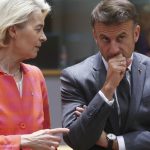Amidst election uncertainty and global tension, gold prices have seen a steady increase as investors seek refuge during the US presidential election. Despite risk appetite improving, the XAU/USD traded at $2,741, up from daily lows due to election jitters and turmoil in the Middle East. US Treasury bond yields have remained steady, with the 10-year benchmark note unchanged at 4.289%. Rising real yields have slightly capped the advance of gold.
Market players have continued to gravitate towards safe-haven assets like gold, the Yen, and the Swiss Franc amidst the uncertainty surrounding the US election results. Commerzbank analysts warn that prolonged uncertainty in the election result could further boost gold prices in the coming days. A Reuters poll also suggested concerns about a potential election crisis similar to the one that followed Trump’s election defeat in 2020.
The Federal Reserve (Fed) is expected to lower borrowing costs by 25 basis points to the 4.50%-4.75% range in the coming days. Economic data revealed that the US trade deficit widened in September, while US business activity showed mixed signs, with a dip in service activity reported by S&P Global. The ISM Services PMI, however, showed improvement for the same period.
Gold prices are currently consolidating around $2,724 to $2,749 as traders await the first results of the US election. Momentum favours buyers as the uptrend remains intact, with the RSI being bullish. Gold buyers must reclaim the key psychological level of $2,750 to maintain a bullish momentum and potentially move towards the all-time high of $2,790. Initial support is at $2,708, followed by $2,700, $2,685, and the 50-day Simple Moving Average at $2,628.
The Federal Reserve plays a significant role in shaping monetary policy in the US, with a dual mandate of achieving price stability and fostering full employment. Interest rates are their primary tool to achieve these goals, adjusting them based on economic conditions. The Fed may raise interest rates to combat rising inflation or lower rates to encourage borrowing during economic downturns. Their policy decisions are made at eight policy meetings a year by the FOMC, attended by twelve Fed officials.
In extreme situations, the Federal Reserve may resort to Quantitative Easing (QE), a non-standard policy measure used during crises or low inflation. QE involves the Fed increasing credit flow by buying high-grade bonds from financial institutions, weakening the US Dollar. Quantitative Tightening (QT) is the reverse of QE, where the Fed stops buying bonds and usually strengthens the US Dollar. Overall, the Fed’s monetary policy decisions have a significant impact on the US economy and global financial markets.











